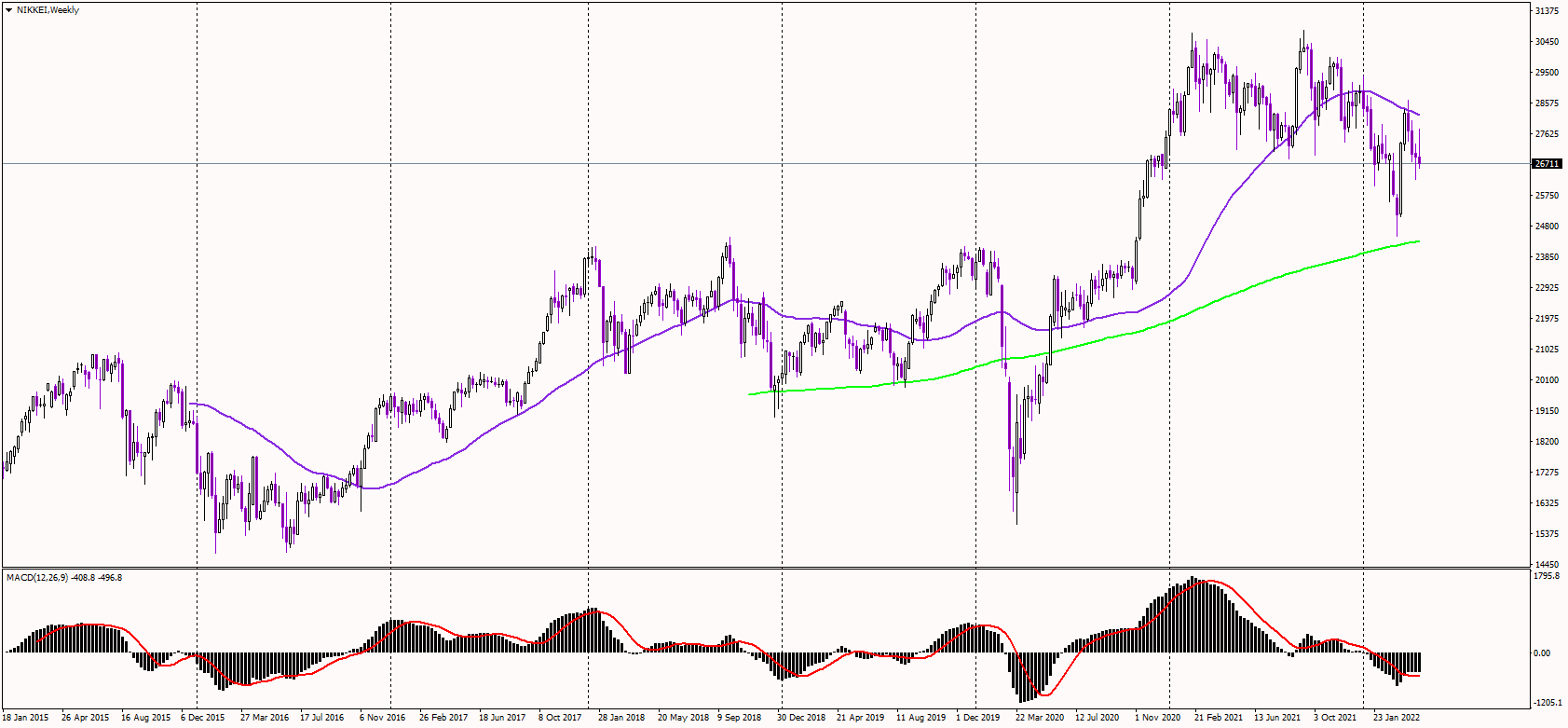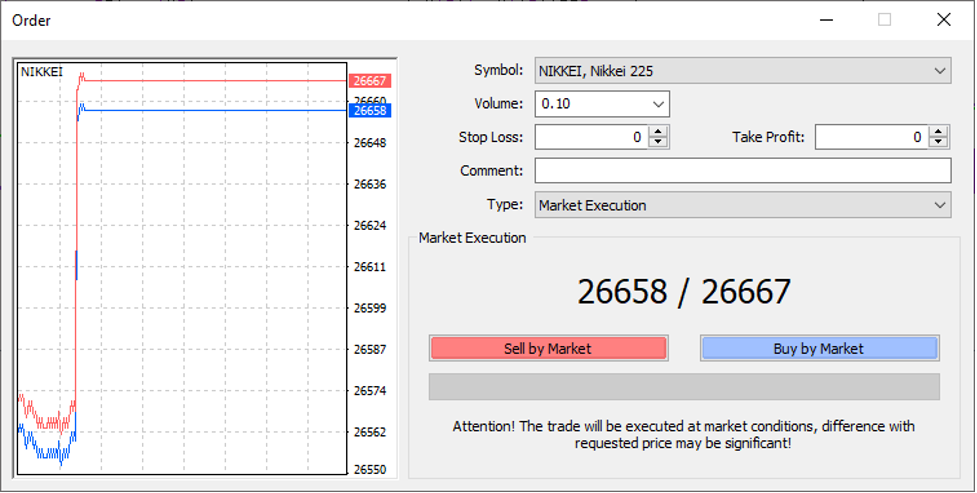Performance
The performance of the Nikkei stock index has been influenced by the Bank of Japan's ultra-lose monetary policy. From 2013 to 2017, The BOJ owned circa 75% of all Japanese Exchange Traded Funds ("ETFs") and is a top 10 shareholder of 90% of the Nikkei 225 constituents. As a result, the index rose above the psychological level of 30,000 JPY in February 2021 and printed 30-year highs. However, since then, it has started to create lower lows and lower highs, indicating a bearish trend, which might continue.
Nevertheless, the Nikkei remains 50% higher when compared to the price in January 2015. On the other hand, it underperforms US equities by a lot, but short-term traders should welcome its volatility.

Source: Purple Trading Metatrader 4
Nikkei 225 - quotes and trading
You can trade the technology index - Nikkei 225 index in our Purple Trading Metatrader 4 platform. First, find the ticker NIKKEI in the Metatrader 4 platform and press the new order button. The following window will pop up.

Source: Purple Trading Metatrader 4
Lot value calculation
When you click on the NIKKEI ticker in our Metatrader 4 platform, you can see that the spread between the Ask and Bid price is circa 9.00 JPY during the times of high liquidity (usually when London and New York are open for trading).
The minimal volume for this index is one micro lot (0.01). If you trade a mini lot (0.1), you will gain or lose 100 JPY for each JPY the index makes. When trading half a lot, each JPY of the index movement will yield 500 JPY of profit/loss. For example, you buy half a lot at 27,000 JPY, and the index goes to 27,100 JPY. Your total profit will be 50,000 JPY (calculated as 100 JPY movement * 500 JPY profit per each JPY of the move). The same logic applies to calculating your profit or loss when entering a short position.
Keep in mind that this index is quoted in JPY; thus, if your account is in EUR or USD, your profit or loss will need to be calculated into USD or EUR, according to the actual EURJPY and USDJPY rate.
As with everything, you can trade at the current market price (market execution) or use pending orders (limit and stop orders). It's unnecessary to enter the stop-loss and take-profit order right now – you can open the trade without them and add them later.